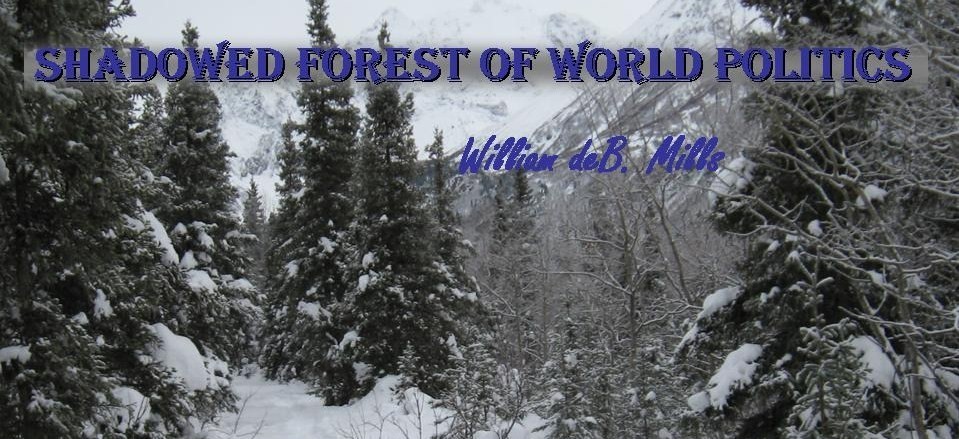A practical method for studying the evolution of scenarios illustrated
with the example of violence
with the example of violence
Scenarios as distinct alternative possible futures (A) is a useful approach, but B is much closer to the reality: it does not matter where you start; the actual course of reality as it unfolds will follow a wandering path because the scenarios are really tendencie
 s in competition. “Which one will come true?” is almost certainly the wrong question. More fruitful questions are: “Which one are we headed toward at the moment…and why…and for how long?” Such questions, assisted by Model B’s emphasis on interaction—rather than choice--among scenarios, imply that scenarios evolve and invite consideration of the dynamics controlling that evolution. Thus, Model B focuses attention on the evolutionary process, which in reality will certainly touch on several of the theoretically “alternative” scenarios. The message of Model B is to think about the probable future scenario chain and the sequence along that chain, as well as the timing and sequence of the various steps in the chain. Where traditional scenario analysis focuses on the scenarios (the boxes), Model B refocuses attention on scenario evolution (the arrows). Such thinking also leads to issues like time slices and sequence.
s in competition. “Which one will come true?” is almost certainly the wrong question. More fruitful questions are: “Which one are we headed toward at the moment…and why…and for how long?” Such questions, assisted by Model B’s emphasis on interaction—rather than choice--among scenarios, imply that scenarios evolve and invite consideration of the dynamics controlling that evolution. Thus, Model B focuses attention on the evolutionary process, which in reality will certainly touch on several of the theoretically “alternative” scenarios. The message of Model B is to think about the probable future scenario chain and the sequence along that chain, as well as the timing and sequence of the various steps in the chain. Where traditional scenario analysis focuses on the scenarios (the boxes), Model B refocuses attention on scenario evolution (the arrows). Such thinking also leads to issues like time slices and sequence.Dynamics.
Dynamics underlying scenario evolution lie at the core of this new approach to analyzing the future. Their endless complexities cry out for visual aids to simplify analysis. Returning to the slide of the Crusader-Aggressor Coalition, for example, think of this not as depicting two actors but as depicting two alternative scenarios. Now the meaning is that we anticipate the possibility of a Crusader Scenario coming true but also see the possibility of an Aggressor Scenario coming true. Moreover, we see that these two scenarios could merge to create a new scenario, combining features of each, i.e., a future characterized by expansion fueled by a coalition of ideologically-oriented “crusaders” in league with coldly calculating “aggressors.” This is a model of the actual European Crusades in the Mideast that combined Catholic extremism and desires to enhance Europe’s international trade competitiveness.
Time Slices.
Rather than vaguely defining scenarios as covering, e.g., “the next 10 years,” pay attention to the likely duration of a scenario without making the assumption that all the scenarios one defines will occur over the same timeframe. Start by assuming that the scenarios are short-term and unstable unless an alternative assumption can explicitly be justified.
Sequence.
Before worrying too much about the time of a scenario, consider sequence. Does a Crusader Scenario logically lead to a Violence Scenario? Identify logical chains of scenario evolution before worrying about the likely duration of each scenario. Timing is important but highly dependent on
 details and thus unknowable when thinking about the future. We should, however, be able to specify theoretically logical evolutionary paths, and to the extent that we do this, we will have valuable warnings.
details and thus unknowable when thinking about the future. We should, however, be able to specify theoretically logical evolutionary paths, and to the extent that we do this, we will have valuable warnings.True Believers: A Theoretical Example.
Returning to the dynamics around others’ perceptions of True Believers, it was hypothesized that the faith (ideological commitment) of even a peaceful true believer would make outsiders uneasy, provoking them to take actions that either would in fact be aggressive or would be viewed by the true believer as aggressive. Thus, we might anticipate that even the benignly-intentioned Idealist might become frightened and start a defensive arms build-up. The Idealist might also form a new alliance. Each move could be seen by the Peaceful True Believer as a threat, inducing the Peaceful True Believer to evolve into a Militant True Believer and subsequently form a counteralliance with an Aggressor.
It is easy to think of the octants as distinct actors in a system, as described in the above paragraph, but the story can of course be told in terms of scenarios. Given a system containing both Peaceful True Believers and Idealists, might the distinction between those with and those without faith by itself provoke violence or can we be confident that the future will be one of a peaceful society composed of some with faith and some without? Unfortunately, to the degree that people without faith distrust those with faith, an arms race and the rise of competing alliances may create a tense world. The greater the tension, the greater the pressure on all to become militant and the greater the opportunity for any (i.e., the Aggressors) who are by nature militant to gain influence. Thus, the likely scenario of the near future lies somewhere between Peaceful True Believer and Idealist. By the medium term, this may evolve toward Crusader or Aggressor, resulting in Violence over the long-term.

No comments:
Post a Comment